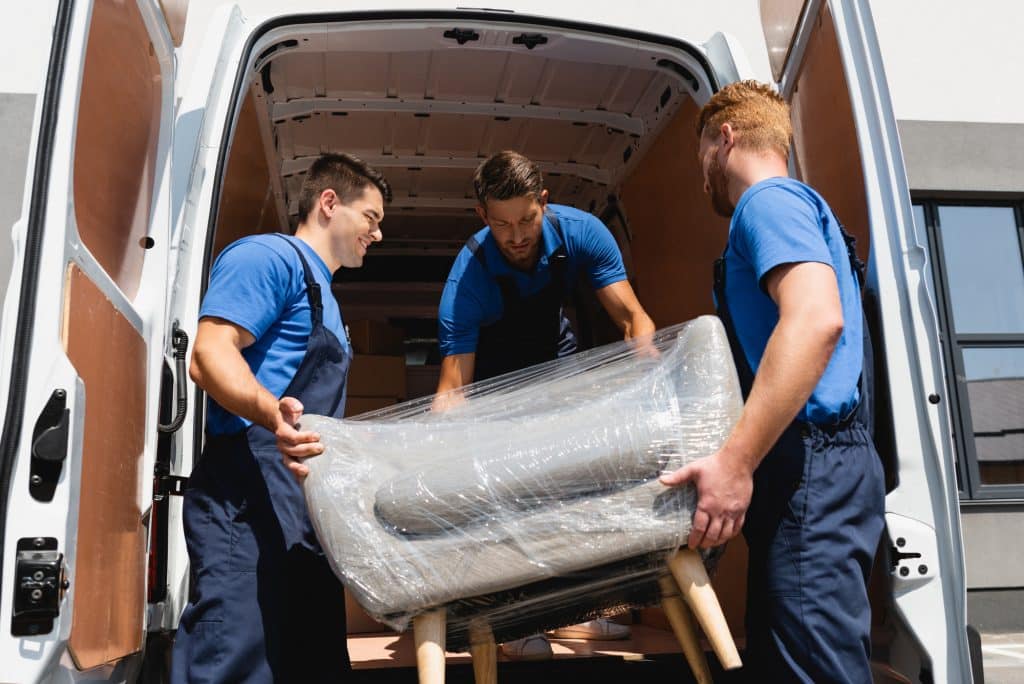Moving day stands as a significant event, often marked by a mix of excitement and stress. The process involves numerous tasks, with loading and unloading items being key among them. Efficiency in these tasks not only ensures the safety of belongings but also contributes to a smoother transition. Getting a good handle on these skills is crucial, as they can turn the daunting task of moving into a manageable, even enjoyable, experience.
1. Pre-Moving Preparation
Preparation is the key to a smooth moving day. Here are some important steps to consider:
- Detailed Planning: A well-thought-out checklist can significantly reduce the stress associated with moving. It allows for a systematic packing and loading process, minimizing the chances of misplaced items or last-minute chaos.
- Gathering Necessary Materials: Having the right tools and materials at hand is crucial. This includes boxes of various sizes, packing tape for securing boxes, bubble wrap for protecting fragile items, and markers for labeling.
- Proper Packing: Packing correctly is an essential part of pre-moving preparation. Boxes should be filled to their limit but not overstuffed. Place heavier items at the bottom and lighter ones on top to prevent damage and optimize space utilization.
- Labeling Boxes: Detailed labels on each box can streamline both the loading and unloading processes. They allow for easy identification of contents, making it simpler to prioritize which boxes to unpack first upon arrival at the new location.
With these steps in place, the path to a successful moving day becomes clearer and more manageable.
2. Efficient Loading Tips
Loading a moving truck efficiently can significantly ease the moving process. Here are some key strategies to consider:
- Prioritizing Items: Deciding what to load first can make a big difference. Items that are not immediately needed in the new home should go in first. This way, they will be the last to be unloaded, allowing immediate access to essential items.
- Strategic Loading: Begin with larger pieces of furniture and appliances, as they usually take up the most space. After these, proceed with boxes, prioritizing the heaviest ones. This sequence maximizes space and ensures stability during transit. For more detailed guidance, there are numerous online resources available, such as https://www.thebigboymovers.com/locations/salt-lake-city-provo/.
- Even Weight Distribution: An imbalanced load can lead to issues like steering difficulties and potential damage to the vehicle or belongings. Strive for a uniform distribution of weight across the truck. This could mean placing heavier items on both sides of the truck or interspersing them with lighter items.
Implementing these loading strategies can make a significant difference in the moving process.
3. Safe And Efficient Unloading Tips

Loaders unloading armchair in stretch wrap from truck on urban street
Unloading a moving truck properly is as important as loading it. Here are some key strategies to ensure a smooth unloading process:
- Orderly Unloading: The sequence of unloading items from the moving truck can greatly impact the process. Start with the items that were loaded last, usually the lighter boxes. This approach allows for easier access to larger items and reduces the risk of damage.
- Safe Handling Of Heavy Items: Safety should be a priority when moving heavy items. Use correct lifting techniques to prevent injuries. This includes bending at the knees, not the waist, and keeping the item close to the body. If an item feels too heavy, seek help or use moving equipment like dollies or hand trucks.
- Prioritizing Essential Items: After unloading, focus on setting up essential items. This could involve assembling beds, connecting major appliances, and unpacking boxes with daily necessities like toiletries and cookware. Setting up these essentials can make the first night in the new home more comfortable and less stressful.
By following these unloading tips, the transition into the new home can be made more efficient and less taxing.
4. Common Mistakes To Avoid On Moving Day
Moving day can be fraught with potential pitfalls. Awareness of common mistakes can help avoid unnecessary stress and ensure a smoother process. Here are some typical errors and tips on how to sidestep them:
- Not Checking Weather Forecasts: Unfavorable weather can disrupt moving plans. Check the forecast for the moving day and plan accordingly. If rain is expected, protect belongings with waterproof covers.
- Ignoring The Layout Of The New Home: Not considering the layout of the new home can lead to difficulties in placing furniture. Get a floor plan of the new place and plan where each item will go.
- Not Taking Care Of Utilities: Forgetting to set up utilities at the new home or cancel them at the old one is a common oversight. Arrange for utilities to be connected at the new home before moving day and disconnect services at the old home.
- Failing To Reserve Parking For The Moving Truck: On the actual day of the move, one common oversight is forgetting to reserve a parking spot for the moving truck. This can lead to unnecessary delays and complications. To avoid this, ensure a suitable and legal parking spot is available and reserved for the moving truck at both the old and new locations.
Avoiding these mistakes can help ensure a smoother and more efficient moving process.
5. Post-Moving Tips
Once the moving truck departs and the new home is brimming with boxes, the next phase begins—unpacking and settling in. Here are some tips to make this process smoother:
- Organized Unpacking: Unpacking can be made quicker and easier with a systematic approach. Begin with the boxes marked as essentials, then proceed to less critical items. Unpacking room by room can make the task feel more manageable and less daunting.
- Dealing With Leftover Packing Materials: After unpacking, there will likely be a surplus of packing materials. Boxes can be flattened for future use or passed on to others who are moving. Packing peanuts and bubble wrap have various uses, from future shipments to insulating windows and protecting fragile items. If these materials cannot be reused, consider recycling programs offered by many moving companies.
With these post-moving tips in mind, settling into the new home can become a more structured and less strenuous task.
Conclusion
Keep in mind, the objective extends beyond transporting items from one location to another. It’s about facilitating a smooth transition to a new chapter in life. The tips provided are designed to aid in this transition. As the day of the move draws near, consider implementing these strategies. They have the potential to turn what could be a stressful event into an exciting step toward a fresh start.








